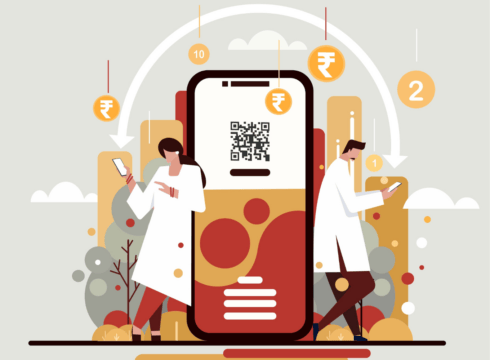Unlike traditional loans, credit on UPI offers on-demand access, allowing consumers to borrow precisely how much they need, when they need it
UPI took a little over 3 years to reach 1 Bn transactions in a month and clocked over 13 Bn transactions in April 2024 alone
According to estimates, credit on UPI represents a potential $1 Tn in transaction spends by 2030
Inc42 Daily Brief
Stay Ahead With Daily News & Analysis on India’s Tech & Startup Economy
Credit availability to underserved Indians remains among the lowest globally – even after a phenomenal 12x growth in digital disbursements between 2017 and 2022. Underwriting for new-to-credit and thin-file Indians whilst ensuring efficient distribution to all segments of the market continues to present significant challenges. The good news is that everyone—our forward-thinking regulator, banks, NPCI, NBFCs, and an incredibly capable tech and DPI ecosystem—is on the job.
On the underwriting side, RBI’s Public Tech Platform for frictionless credit, developed by the RBI Innovation Hub, is an exciting initiative that can make underwriting for retail lending completely digital and seamless.
Developed as an open platform with plug-and-play access for lenders, it is expected to aggregate various financial and risk information across Central and State governments, account aggregators, banks, and credit information bureaus, as well as alternative sources like land registers and dairy cooperatives to make underwriting in minutes a reality.
On the distribution side, a lot has been said about the unit economics of servicing both underserved and unserved customers. Truth is, we’re also sitting on some thorny challenges in driving uptake and utilisation even with credit-approved customers.
Banks and NBFCs have pre-approved credit for millions of customers but are not able to reach or engage them successfully at the point of need. And this is where, I believe, the relatively recent innovation of Credit on UPI delivers a home run for banks by completely altering the discovery, access, and cost mechanics of retail lending.
An Idea Whose Time Has Come
Unlike traditional loans, credit on UPI offers on-demand access, allowing consumers to borrow precisely how much they need, when they need it. This changes the distribution play entirely, with quantum improvements in three key areas of retail lending:
Discovery
We’ve all received unsolicited calls informing us that we have received approval for a loan of so many lakhs. And 99% of us don’t want that money sitting in our accounts accumulating interest charges.
Change this scenario to one where you find yourself contemplating an unplanned purchase or being in the hospital for an emergency. Opening up your payment app to discover a preapproved credit line that you can use directly and only to the extent needed is an entirely different experience.
In the same way, credit on UPI can enhance discovery and uptake amongst banking customers who have recently migrated to credit-approved status. Credit on UPI can also dramatically improve the utilisation of existing loans if banks bundle them with credit lines for affiliated expenses.
Consider that customers rarely utilise the entire underwritten amount as a loan; banks can offer the remaining amount as a credit line to drive uptake, for example, a credit line for student living expenses offered on top of an educational loan
Access
Credit on UPI is expected to be available at all point-of-sale (PoS) terminals via QR code, giving it a distribution network as wide as UPI from Day 1. As of March 2024, there are over 34 Mn QR Codes servicing the 300 Mn Indians who use UPI, translating to an access ratio of roughly 1 QR code for every 10 users.
This is significantly more impactful than the traditional POS terminal mechanics at play today. A ready distribution network will also make it a lot more compelling for smaller banks to launch their credit products on UPI and compete with the largest institutions. This, in turn, will improve the availability and affordability of credit.
Cost
Credit on UPI changes the unit economics of small ticket loans by simultaneously solving for both distribution and collections. By enabling banks to offer credit seamlessly through any UPI PSP app, it can potentially reduce the distribution cost of credit by eliminating the need for elaborate application processes. It will also help banks reach previously underserved segments, further reducing origination costs.
With a completely digital ecosystem for collections Credit on UPI eliminates the need for lenders to manage offline modes of repayment, drastically reducing collection costs. It also enables sticky engagement with customers by enabling repeat use and increase of their credit line at the point of need.
When stacked on top of each other, this brings down the cost of re-acquiring customers significantly.
A Frictionless Environment For Unprecedented Growth
Not counting the expected growth in retail lending in the coming years, which is estimated to be growing at 12% between 2017 and 2026, or the current market size of PoS lending at INR 7.5 Lakh Cr and loans against gold at INR 6 Lakh Cr, the potential for credit on UPI to disrupt credit availability is immense.
It eliminates friction, opens up new consumer credit segments, and has innovation potential beyond credit distribution to facets like digital onboarding and dynamic product offerings.
After it was first launched in August 2016, UPI took a little over 3 years to reach 1 Bn transactions in a month. Less than 5 years later, UPI clocked over 13 Bn transactions in April 2024 alone. It’s early days for credit on UPI currently, but I believe it represents a potential $1 Tn in transaction spends by 2030.
{{#name}}{{name}}{{/name}}{{^name}}-{{/name}}
{{#description}}{{description}}...{{/description}}{{^description}}-{{/description}}
Note: We at Inc42 take our ethics very seriously. More information about it can be found here.


